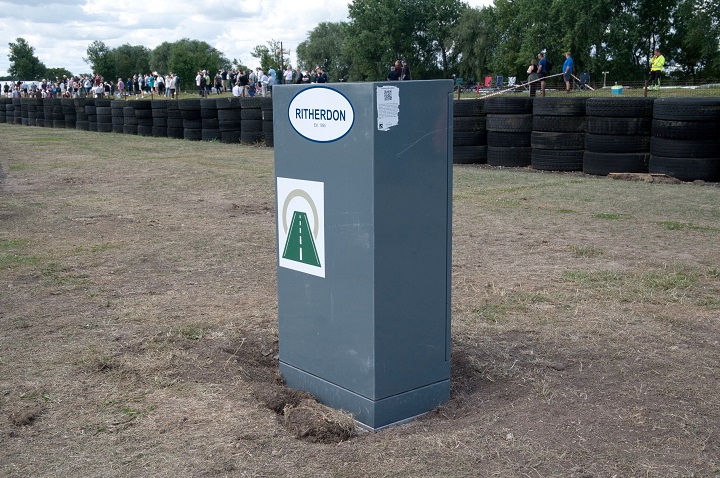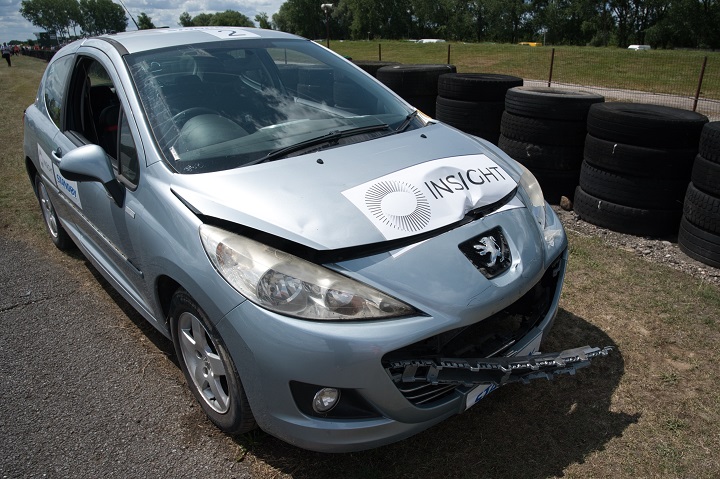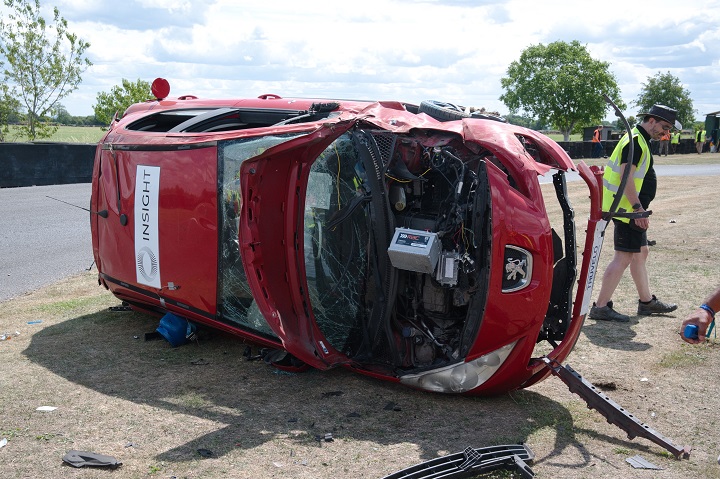
A new passively safe roadside cabinet, designed to shear off when struck by a vehicle, has been launched to protect drivers and passengers in the event of a collision.
The cabinet has been developed by manufacturing company Ritherdon, in collaboration with Manchester University’s School of Mechanical, Aeronautical and Civil Engineering. It has been tested to the specifications outlined in European standard EN 12767.
Described as a world’s first, the passively safe cabinets are made from the same steel as traditional roadside cabinets, and are installed the same way, but their design means the body of the is not bolted to the ground.
Instead, it is attached to a spacer base with breakaway bolts which, if hit with enough force, shear off.
Recent crash demonstrations have shown the ‘striking’ difference between a car hitting a passively safe cabinet versus a normal cabinet, which is likely to completely destroy the car, the cabinet and potentially the inhabitants of the car.
In the UK, like many other countries, there are rules and regulations regarding the installation of roadside cabinets.
If the road is over a certain speed for motorists, electrical cabinets need to be either set back from the road or be surrounded by a vehicle restraint system (VRS), which usually entails barriers being installed around the cabinet to protect drivers in the event of a crash.
Ben Ritherdon, managing director of Ritherdon, said: “The passively safe cabinet doesn’t need to be placed behind an expensive VRS, and it doesn’t need to be set back from the road – and drivers will be as protected as possible.
“Also, a single passively safe cabinet is much quicker and cheaper to replace than a standard cabinet and a VRS in the event of a collision.”
Two demonstration crashes at the Institute of Traffic Accident Investigators ITAI Crash Day 2025, held in July at Darley Moor in Derbyshire, showed the cabinet did what it was designed to do – not destroy the car that crashed into it at 56mph.

Damage to a car after striking at passively safe cabinet at 56mph
Later in the day, a similar remote operated car was rammed into a standard electrical cabinet – one that would normally be protected behind a VRS. This crash, at just over 50mph, saw the car get thrown into the air, and come to a stop upside down.

Damage to car striking standard cabinet at just over 50mph
Ben added: “The demonstration has shown two things. Firstly, cabinets, if they are not passively safe, definitely need to be protected with a VRS.
“Secondly, passively safe cabinets should become a more of a feature along our roads.”
Comment on this story